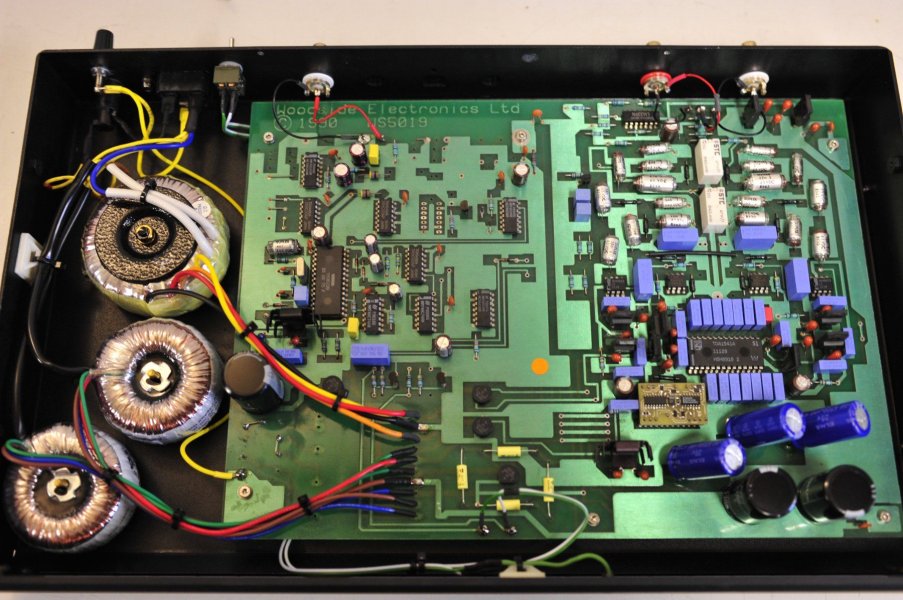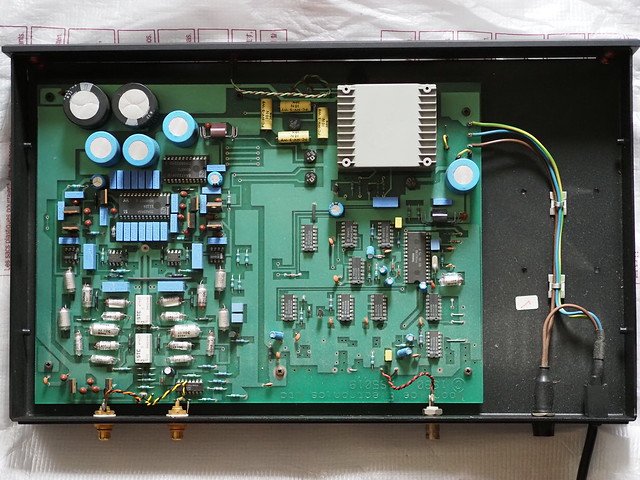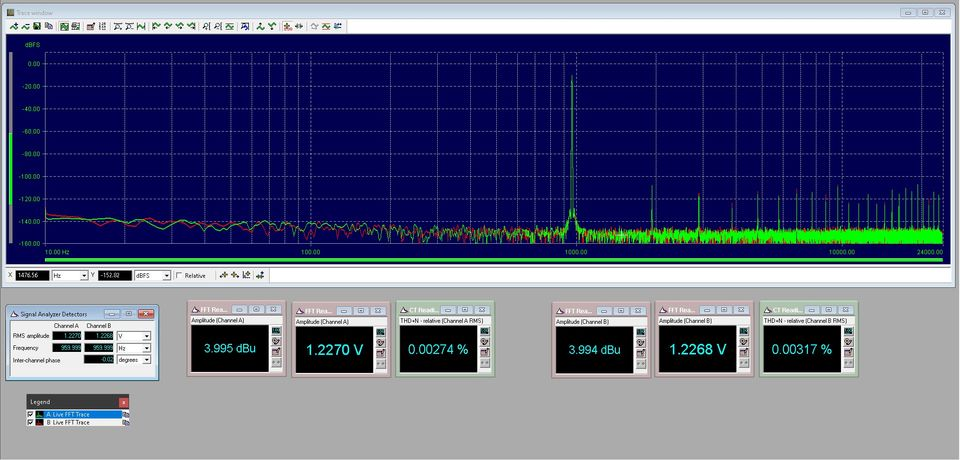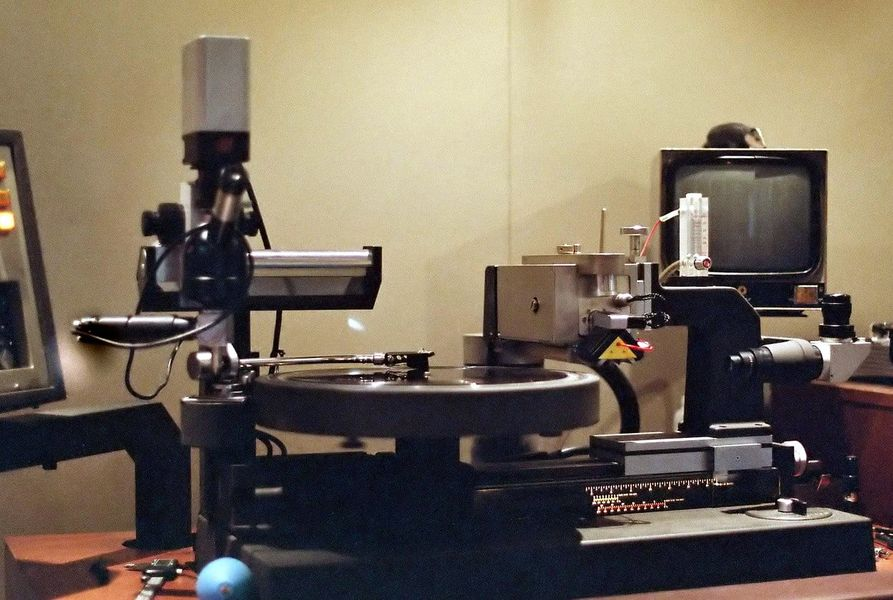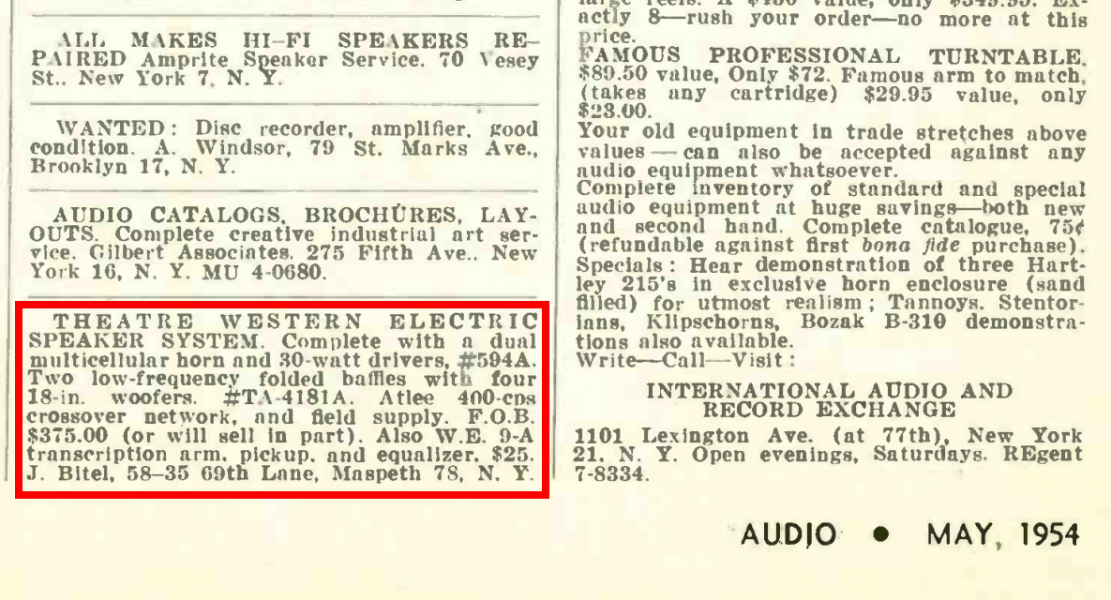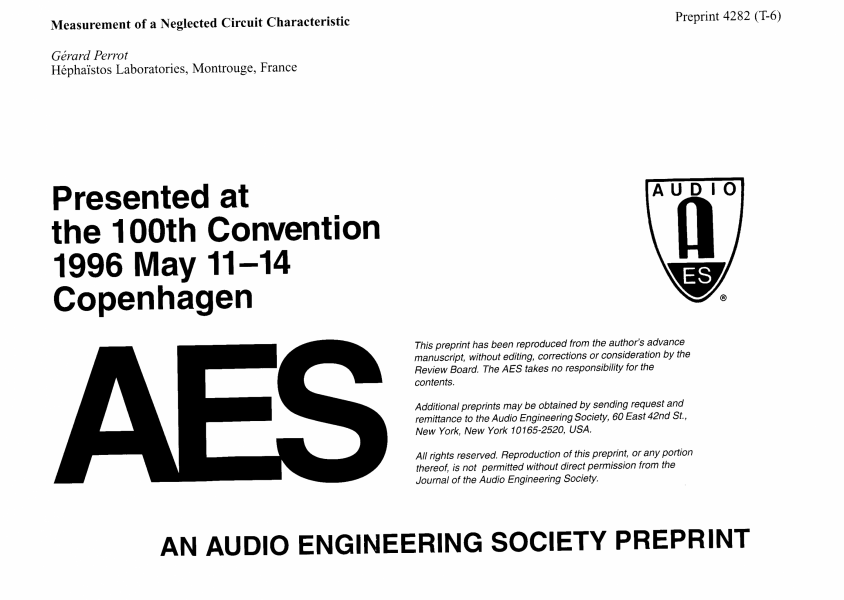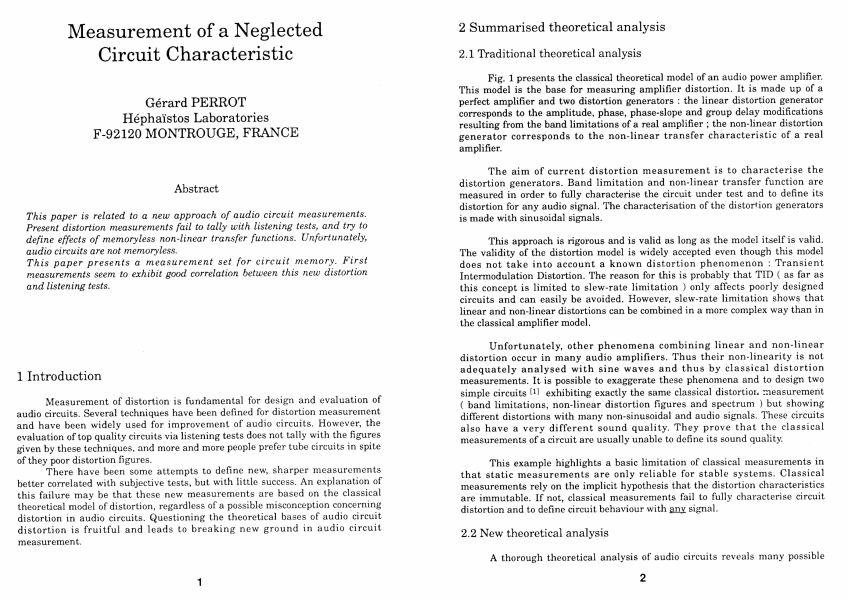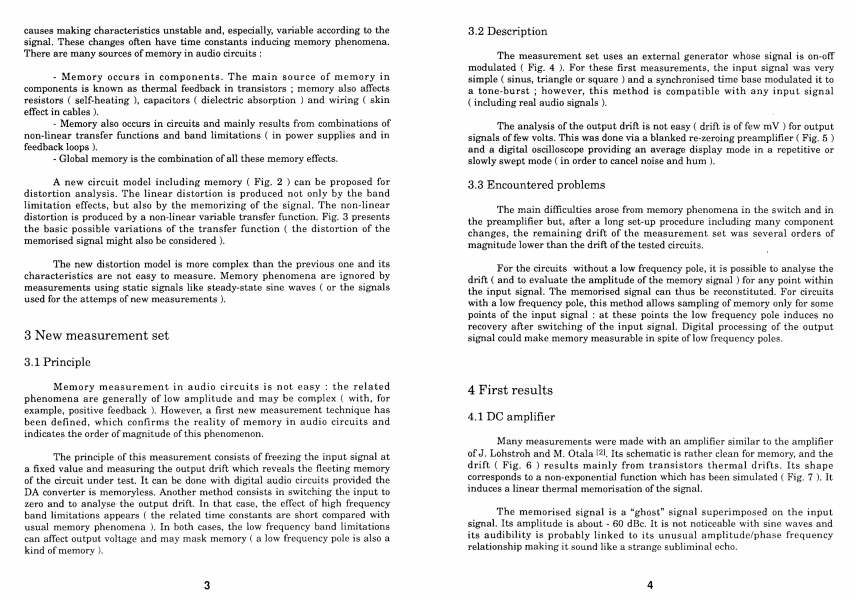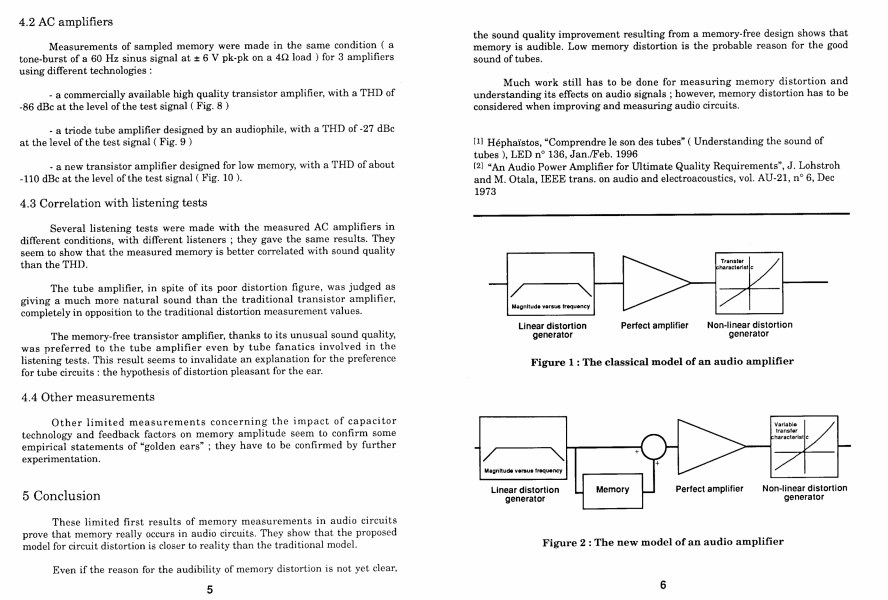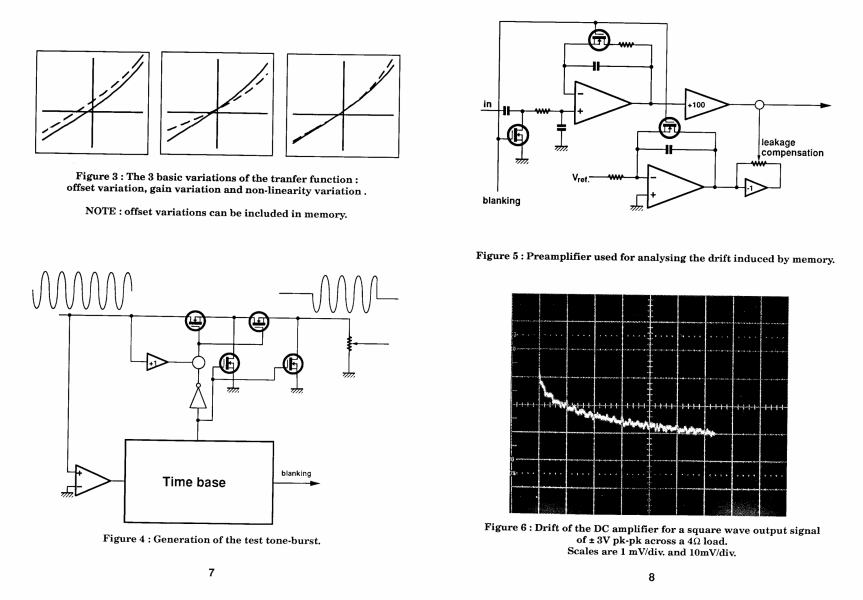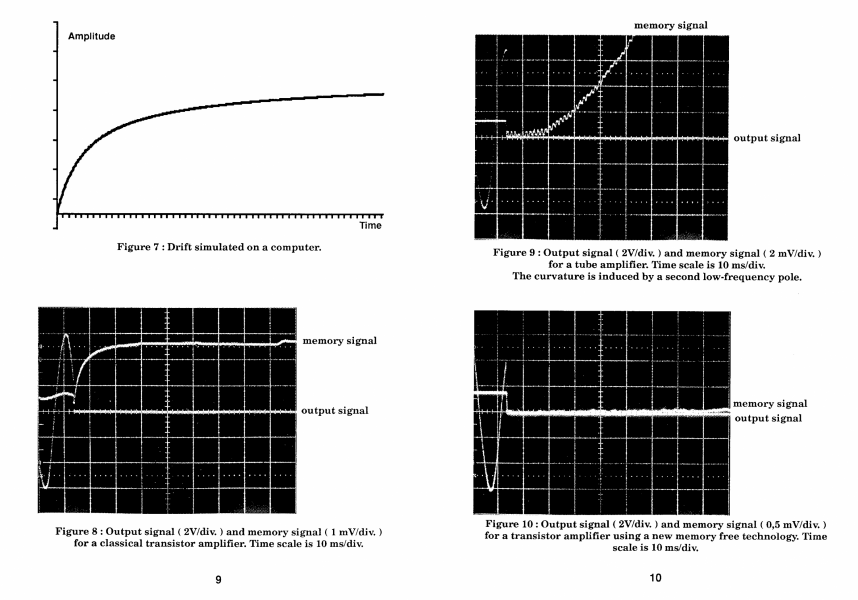Can digital get to vinyl sound and at what price?
- Thread starter ScottK
- Start date
You are using an out of date browser. It may not display this or other websites correctly.
You should upgrade or use an alternative browser.
You should upgrade or use an alternative browser.
- Status
- Not open for further replies.
You must do some mods on this board e.g voltage ref then it will be even better. The noise level is then at the measurement limit. this generates more dynamic and a wider deeper soundstage. Mod site
The r ladder output is 1.4Volt zout 625 ohm i have test it with transformer coupled, with normal tubes and dht.
Soekris DAC: Modding VRef
MUST DO MOD? As it turned out, the implementation of the 4V reference voltage in the Soekris DAC has been found to be sub-optimal. Fortunately, thanks to experiments and measurements by industrious…hifiduino.wordpress.com
So many use that board lampizator, accuhorn ,lessloss and many more.
In the end i use Nos and this buffer ..wow that dynamic and cleaness is insane.
https://www.sjostromaudio.com/pages...joestroem-super-buffer-diamond-buffer?start=7
My dacView attachment 126505
Very nice.
Here is my Acuhorn, seeing as you mention them. Using a Soekris DAM1121-001 board.
Stunning and totally analog-sounding. Running 45 mesh globes. Internals rewired to Mundorf silver and gold wire.
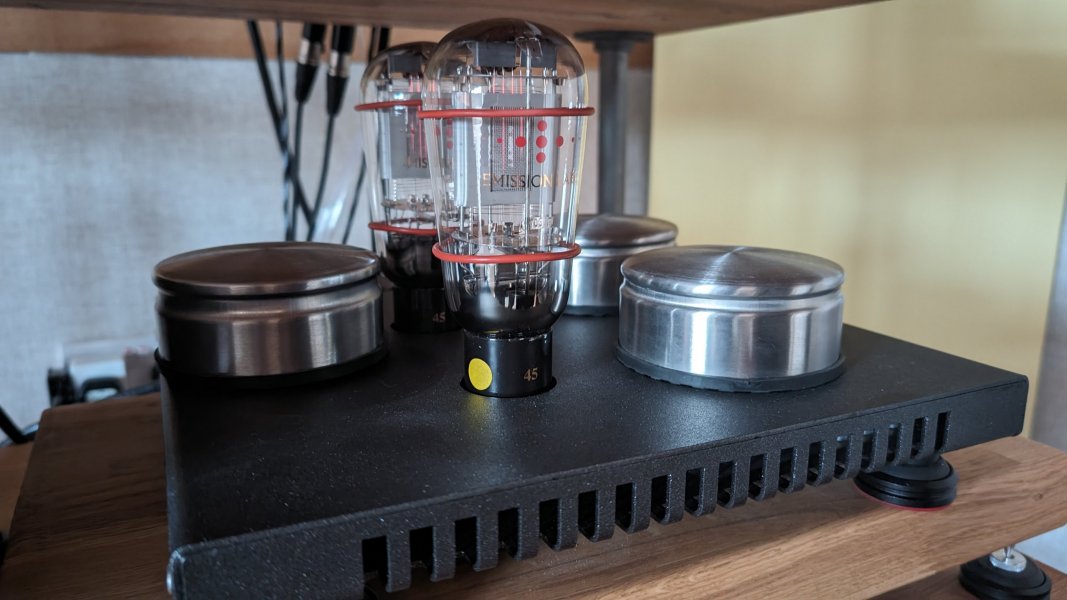
Congrats ,I think the dac have the new oem board 1121 not dam 1021soekris.Very nice.
Here is my Acuhorn, seeing as you mention them. Using a Soekris DAM1121-001 board.
Stunning and totally analog-sounding. Running 45 mesh globes. Internals rewired to Mundorf silver and gold wire.
View attachment 126557
You can no longer program filters yourself there, I no longer see an interface socket
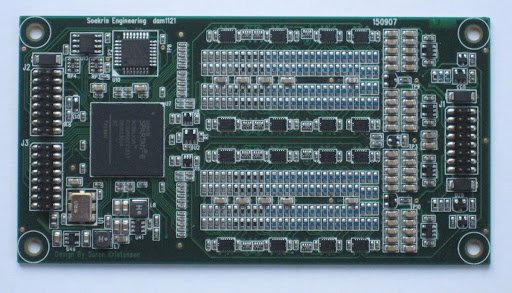
This amount of good, but scarce chips in just 1 device makes me involuntarily think:
"With those precious AD chips multiple DACs could have been made, each with 80-90% of the (sound) quality".
Last edited:
The task was to keep the noise floor lower in order to keep the resolution as high as possible at low levels. Of course, two chips per channel also drive the transformer that drives the tube. but if there is a no supply shortage why notThis amount of good, but scarce chips in just 1 device makes me involuntarily think:
"With those precious AD chips multiple DACs could have been made, each with 80-90% of the (sound) quality".
VMS is wanted in Germany and you can sell it expensively. The irony of the story 20 years ago no one wanted to buy LPs . They sold everything to Japan only to buy them back at twice the price today.In light of this thread...
"Optimizing Morpheus DAC for use in conjunction with Neumann VMS80 (lacquer) and VMS82 (DMM)":
View attachment 126763View attachment 126764
Selled lps 2004 ~1.4 million germany
2023 ~ 15 million germany
It's a schism: analog data represents a continuous function of time while a digital signal transmits data in a discrete function of time.
"Analog waves are smooth and continuous, digital waves are stepping, square, and discrete."
A similar phenomenon is at play with Class A compared to any other amp topology.
In terms of purity of the signal, there's no alternative to analog (+ Class A).
However, analog signals are more sensitive to noise and distortion. In addition, energy efficiency and convenience (storage) also play a role.
On top of this, there are also lesser-known phenomena, such as memory distortion (in solid-state devices).
"Analog waves are smooth and continuous, digital waves are stepping, square, and discrete."
A similar phenomenon is at play with Class A compared to any other amp topology.
In terms of purity of the signal, there's no alternative to analog (+ Class A).
However, analog signals are more sensitive to noise and distortion. In addition, energy efficiency and convenience (storage) also play a role.
On top of this, there are also lesser-known phenomena, such as memory distortion (in solid-state devices).
Last edited:
If you are interested in all these aspects, you should check out ECDesigns' powerDAC-SX, which from a "technical" perspective is something really different and "novel". I've talked enough here about my own listening impressions. I know only of two other people who have this product. One is a dealer, who decided to commercialize it after listening to it. The other is an audiophile who uses Wolf Von Longa Son speakers, and basically replaced his whole setup (DAC + amplifiers + preamps) with the powerDAC. But YMMV, obviously. I don't really fully understand all the technical aspects. From a listener's perspective, it sounds "right" to me, but speaker association becomes critical, and here the distortions introduced (crossovers, speakers, room) are potentially of a much higher order. I think it's good to keep that in mind.In terms of purity of the signal, there's no alternative to analog (+ Class A).
However, analog signals are more sensitive to noise and distortion. In addition, energy efficiency and convenience (storage) also play a role.
It's a schism: analog data represents a continuous function of time while a digital signal transmits data in a discrete function of time.
"Analog waves are smooth and continuous, digital waves are stepping, square, and discrete."
Standard misunderstanding of digital theory. There are no "discrete steps":
It's explained in the first 9 minutes of the video, with irrefutable evidence from an oscilloscope. It is worth watching the entire video, however, since it debunks other things as well, such as "filtering artifacts".
Earlier I wanted to ask how you like that DACIf you are interested in all these aspects, you should check out ECDesigns' powerDAC-SX, which from a "technical" perspective is something really different and "novel". I've talked enough here about my own listening impressions. I know only of two other people who have this product. One is a dealer, who decided to commercialize it after listening to it. The other is an audiophile who uses Wolf Von Longa Son speakers, and basically replaced his whole setup (DAC + amplifiers + preamps) with the powerDAC. But YMMV, obviously. I don't really fully understand all the technical aspects. From a listener's perspective, it sounds "right" to me, but speaker association becomes critical, and here the distortions introduced (crossovers, speakers, room) are potentially of a much higher order. I think it's good to keep that in mind.
Anyway, I think you'll agree that analog is continuous and digital is 'chopped'.Standard misunderstanding of digital theory. There are no "discrete steps":
It's explained in the first 9 minutes of the video, with irrefutable evidence from an oscilloscope. It is worth watching the entire video, however, since it debunks other things as well, such as "filtering artifacts".
The basic principle: The red digital signal is the sampled and quantized representation of the gray analog signal. A digital signal consists of a sequence of samples, which in this case are integers: 4, 5, 4, 3, 4, 6...
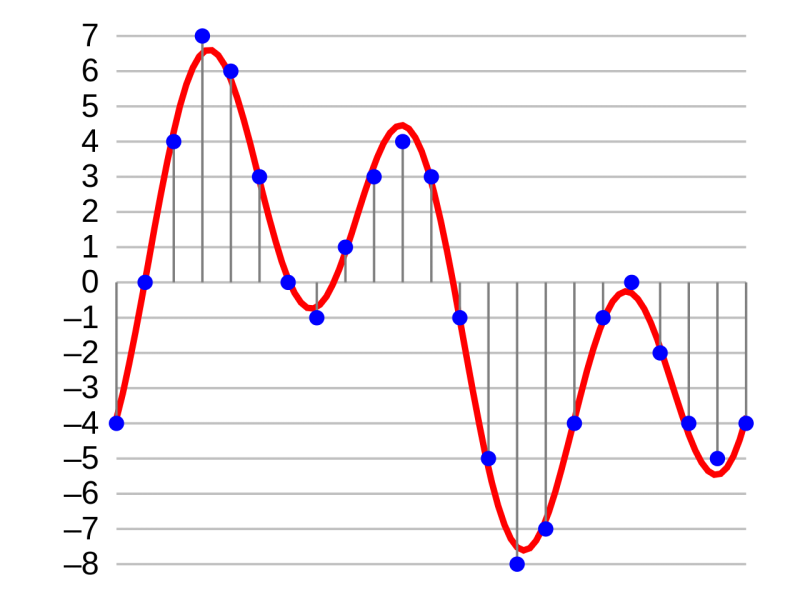
The confusion/misconception probably lies herein:
"The process of analog-to-digital conversion produces a digital signal.
The conversion process can be thought of as occurring in two steps:
- sampling, which produces a continuous-valued discrete-time signal, and
- quantization, which replaces each sample value with an approximation selected from a given discrete set (for example, by truncating or rounding)."
Interestingly: "The human brain cannot accurately be described as either analog or digital, but contains elements of both".
Last edited:
Anyway, I think you'll agree that analog is continuous and digital is 'chopped'.
You think wrongly. Anyway, what does that even mean, 'chopped'?
I think if i look in this thread 10 years from now the post count will be around 5758 with exactly the same standpoints .
How long is this ( dirty ) trench war gonna last ?
If either party just did some concessions in view points the matter could be settled fast lol.
How long is this ( dirty ) trench war gonna last ?
If either party just did some concessions in view points the matter could be settled fast lol.
Last edited:
I remember faculty meetings at Vanderbilt where two unwilling groups had been grafted into one department.
The few actually apolitical participants were frustrated rather than invigorated by the constant bickering.
I remember one conversational string that began “There is no such thing as a dead issue here.” This led to the epiphany that “There are no real issues here.” The whole odiferous mess was about power and who was superior. Neither side wanted to be the tail, but the end result was two tails … both trying to wag the dog.
The few actually apolitical participants were frustrated rather than invigorated by the constant bickering.
I remember one conversational string that began “There is no such thing as a dead issue here.” This led to the epiphany that “There are no real issues here.” The whole odiferous mess was about power and who was superior. Neither side wanted to be the tail, but the end result was two tails … both trying to wag the dog.
Reminds of an explanation of dark matter > "it's not dark and it doesn't matter".I remember faculty meetings at Vanderbilt where two unwilling groups had been grafted into one department.
The few actually apolitical participants were frustrated rather than invigorated by the constant bickering.
I remember one conversational string that began “There is no such thing as a dead issue here.” This led to the epiphany that “There are no real issues here.” The whole odiferous mess was about power and who was superior. Neither side wanted to be the tail, but the end result was two tails … both trying to wag the dog.
I like mind over matter … “If you don’t mind, it doesn’t matter.”Reminds of an explanation of dark matter > "it isn't dark and it doesn't matter".
Anyway, I think you'll agree that analog is continuous and digital is 'chopped'.
The basic principle: The red digital signal is the sampled and quantized representation of the gray analog signal. A digital signal consists of a sequence of samples, which in this case are integers: 4, 5, 4, 3, 4, 6...
View attachment 126853
The confusion/misconception probably lies herein:
"The process of analog-to-digital conversion produces a digital signal.
The conversion process can be thought of as occurring in two steps:
- sampling, which produces a continuous-valued discrete-time signal, and
- quantization, which replaces each sample value with an approximation selected from a given discrete set (for example, by truncating or rounding)."
Interestingly: "The human brain cannot accurately be described as either analog or digital, but contains elements of both".
That visualization is nice, but it ignores that this is a really low-bit system. At 16-bit the signal-intensity steps are something like 65,000 + (allowing for a 96-dB dynamic range, higher with dither), so any inaccuracies are probably lower than vinyl-induced signal distortions, even though that medium is 'continuous' -- but with a lower dynamic range (not that this lower dynamic range matters much in practice).
- Status
- Not open for further replies.
Similar threads
- Replies
- 14
- Views
- 2K
- Replies
- 1
- Views
- 331
- Replies
- 44
- Views
- 7K
| Steve Williams Site Founder | Site Owner | Administrator | Ron Resnick Site Owner | Administrator | Julian (The Fixer) Website Build | Marketing Managersing |











